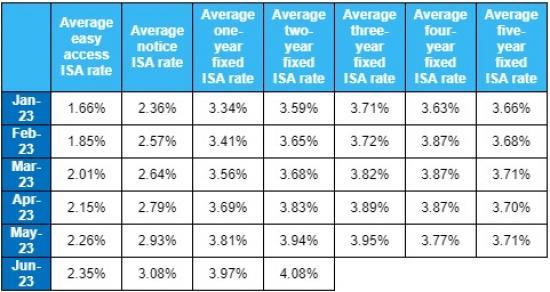Variable Savings Rates Hold Firm As Interest Paid On Fixed Accounts Drops Sharply
5th February 2024

December saw the largest month-on-month fall in average fixed savings rates in over a decade, and January saw an even steeper reduction as providers continued to slash interest paid to savers.
Despite this, variable savings rates have remained largely steady in recent months. Moneyfactscompare.co.uk looks at the recent trends and analyses what's been going on.
The average rates on fixed rate bonds and ISAs in 2023 hit their first-of-month peaks for 2023 in Autumn, with three and five-year rates peaking in September, and one, two and four-year equivalents reaching their high in October.
Since then, these bonds and ISA rates have reduced drastically, with some average rates having fallen more than a percentage point since their highest point just a few months back.
As of 1 February 2024, the average one-year fixed bond stood at 4.62%, a significant 0.82% down from its recent first of month peak at 5.44% in October. Similarly, the average one-year fixed ISA stood at 4.51%, 0.76% down from its recent high in October at 5.27%.
The trend continues across longer-term fixed rates. The average four-year fixed bond stood at 3.96% on 1 February, a dramatic fall of 1.04% from a rate of 5.00% on 1 October. Meanwhile, the average two-year fixed ISA stood at 4.22%, 1.01% down from 1 October at 5.23%.
However, there is a stark contrast in the fluctuation - or lack - - of variable rates.
The average interest paid on an easy access account stands at 3.17% - just a minimal 0.02% down on the first-of-month 2023 peak of 3.19% in November. Notice accounts have fallen slightly more - from a peak of 4.44% on 1 December to 4.30% now - but that drop of 0.14% remains very modest in comparison with fixed rate reductions.
Trends across variable rate ISAs are also following similar patterns, with just minor reductions being made in recent times. The average easy access ISA rate rose in January, from 3.25% to 3.30%, and currently is just a minimal 0.01% down on the first-of-month 2023 peak of 3.31% in December.
Why aren't variable rates falling much?
With the Bank of England base rate having been held at 5.25% since August 2023, variable rates - which are heavily influenced by interest rates - have remained fairly steady.
Banks and building societies tend to price anticipated economic factors into their fixed rates: so, for example, if they expect falls in inflation or base rate to happen in coming months, they may pre-emptively cut their fixed rates. However, providers can operate more reactively when it comes to variable rates – as these can be changed within a much shorter time frame, and thus avoid committing to a specific rate over a fixed period.
James Hyde, Spokesperson at Moneyfactscompare.co.uk, said, "Average fixed savings rates fell in the Autumn for the first time in a couple of years, with swingeing reductions continuing in the following months. Meanwhile, the average easy access rate has barely shifted at all since peaking in November.
"On 1 October 2023, the average one-year fixed bond paid 2.27% more than the average easy access account – in just four months the gap has narrowed to just 1.45%.
"Even among the best-paying accounts, on 1 October the most lucrative one-year fixed bond paid 1% more than the market-leading easy access account: whereas now the top-paying easy access account pays 0.04% more than the best one-year fixed deal.
"It remains as essential as ever that savers shop around and switch to get the best possible return on their hard-earned cash."
For much more information on interest rates see Moneyfactscompare.co.uk
Moneyfactscompare.co.uk
